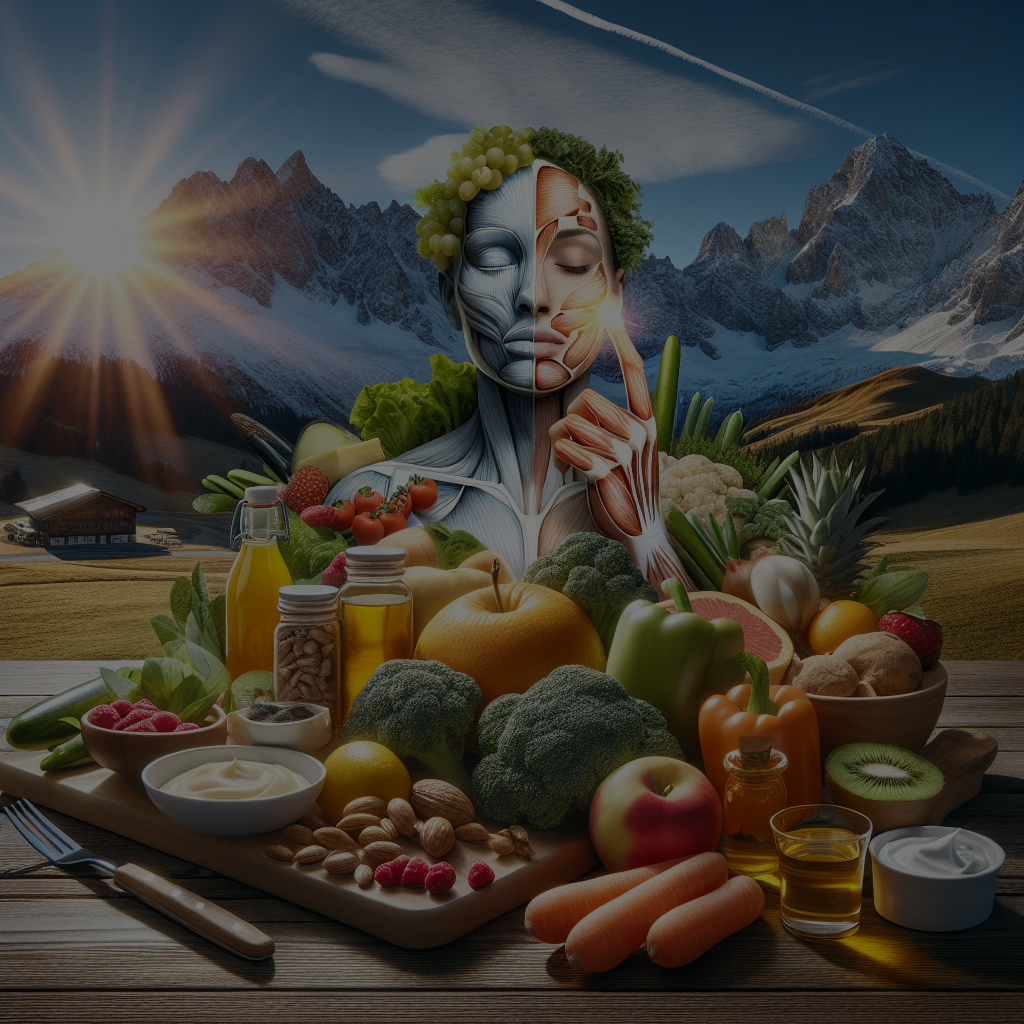
Alpine environments present unique challenges for skin health, making diet and nutrition crucial factors in maintaining optimal skin condition. The harsh weather conditions, high altitudes, and increased exposure to UV radiation can significantly impact the skin, necessitating a well-rounded approach to skincare that includes dietary considerations.
Understanding the Alpine Environment and Its Impact on Skin
The alpine environment is characterized by its high altitude, cold temperatures, and intense UV radiation. These factors can lead to a range of skin issues, including dryness, premature aging, and increased sensitivity. The thin atmosphere at high altitudes means that UV radiation is more potent, which can accelerate skin damage and increase the risk of skin cancer. Additionally, the cold and windy conditions can strip the skin of its natural oils, leading to dryness and irritation.
High Altitude and UV Radiation
At higher altitudes, the atmosphere is thinner, and there is less oxygen. This results in increased exposure to UV radiation, which can penetrate deeper into the skin and cause more significant damage. UV radiation is known to break down collagen and elastin fibers, leading to premature aging and the formation of wrinkles. It also increases the risk of skin cancer by causing mutations in the DNA of skin cells.
Cold Temperatures and Wind
The cold temperatures and strong winds typical of alpine regions can have a drying effect on the skin. The low humidity levels in these areas mean that there is less moisture in the air, which can lead to dehydration of the skin. Wind can exacerbate this effect by stripping away the skin’s natural lipid barrier, which helps to retain moisture. This can result in dry, flaky, and irritated skin.
The Importance of Diet and Nutrition for Alpine Skin Health
Given the unique challenges posed by the alpine environment, maintaining a healthy diet and proper nutrition is essential for skin health. Certain nutrients can help to protect the skin from environmental damage, promote hydration, and support the skin’s natural repair processes.
Antioxidants
Antioxidants are crucial for protecting the skin from the damaging effects of UV radiation and other environmental stressors. They work by neutralizing free radicals, which are unstable molecules that can cause oxidative stress and damage to skin cells. Foods rich in antioxidants, such as berries, nuts, and leafy greens, can help to bolster the skin’s defenses and reduce the risk of premature aging and skin cancer.
Omega-3 Fatty Acids
Omega-3 fatty acids are essential for maintaining the skin’s lipid barrier, which helps to retain moisture and protect against environmental damage. These healthy fats can be found in foods such as fatty fish, flaxseeds, and walnuts. Including omega-3-rich foods in the diet can help to keep the skin hydrated and reduce inflammation, which is particularly important in the harsh alpine climate.
Vitamins and Minerals
Certain vitamins and minerals play a vital role in skin health. Vitamin C, for example, is essential for collagen production, which helps to maintain the skin’s elasticity and firmness. It also has antioxidant properties that can protect the skin from UV damage. Vitamin E is another important nutrient that helps to protect the skin from oxidative stress and supports the skin’s natural repair processes. Zinc is a mineral that is crucial for wound healing and can help to reduce inflammation and irritation.
Practical Dietary Tips for Alpine Skin Health
Incorporating a variety of nutrient-rich foods into the diet can help to support skin health in the alpine environment. Here are some practical tips for maintaining a healthy diet that promotes optimal skin condition:
- Eat a Rainbow: Include a variety of colorful fruits and vegetables in your diet to ensure you are getting a wide range of antioxidants and other essential nutrients.
- Stay Hydrated: Drink plenty of water to keep your skin hydrated, especially in the dry alpine climate. Herbal teas and water-rich foods, such as cucumbers and watermelon, can also help to boost hydration levels.
- Include Healthy Fats: Incorporate sources of omega-3 fatty acids, such as salmon, chia seeds, and avocados, into your meals to support the skin’s lipid barrier and reduce inflammation.
- Boost Vitamin Intake: Consume foods rich in vitamins C and E, such as citrus fruits, bell peppers, almonds, and sunflower seeds, to protect the skin from environmental damage and support collagen production.
- Consider Supplements: If you find it challenging to get enough of certain nutrients from your diet alone, consider taking supplements to ensure you are meeting your skin’s nutritional needs.
Conclusion
The alpine environment presents unique challenges for skin health, but with the right dietary and nutritional strategies, it is possible to maintain healthy, resilient skin. By incorporating a variety of nutrient-rich foods into your diet and staying hydrated, you can help to protect your skin from the harsh conditions and support its natural repair processes. Remember, a holistic approach to skincare that includes both topical treatments and dietary considerations is key to achieving optimal skin health in the alpine environment.
